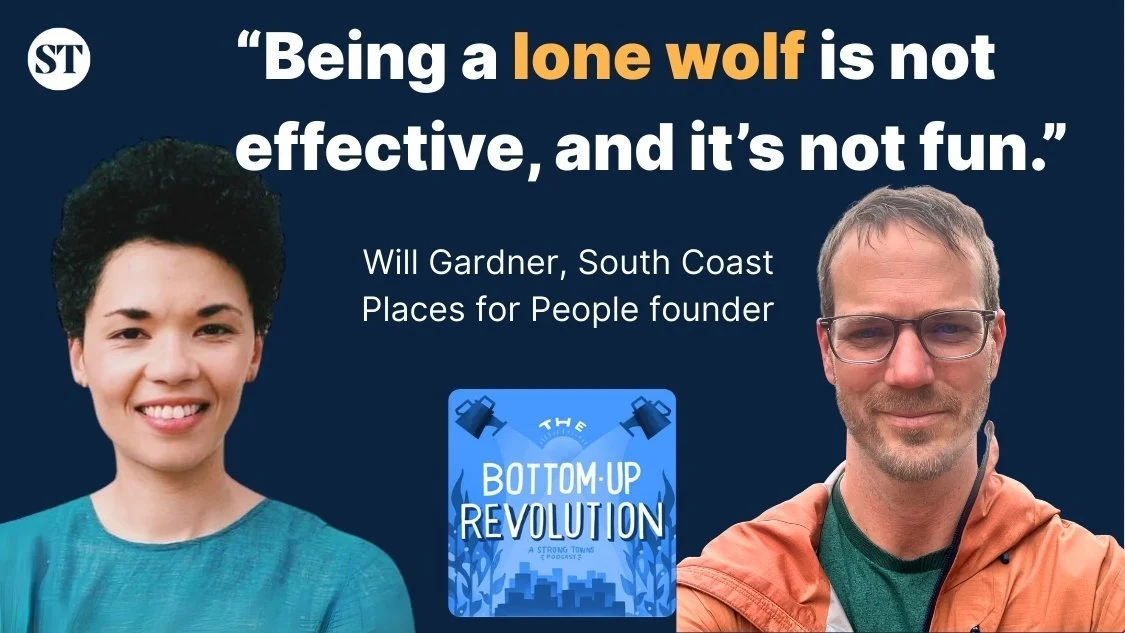This City Knows How to Talk to Residents!
A street redesign project underway in Selkirk, Manitoba. (Source: City of Selkirk.)
Municipalities struggle to communicate in ways that don’t bore or enrage the general public. I wrote press releases and speeches for the mayor of Surrey, British Columbia after university, and I can now say that I wrote a lot of boring stuff. It was my responsibility to steer clear of any hint of controversy by saying as little as possible in as many words as possible. That ensured we avoided a fuss, but it also resulted in a lack of meaningful communication with residents—I would even say it contributed to a broader ignorance of what the city was doing for its residents.
I find that it is easy to be critical of cities and towns for the ways they mess up the work of communicating with residents. You can think of places that blame pedestrians and drivers instead of changing street designs or celebrate “improvements” that are a step backward. I know I jumped into the Twitter frenzy when my city’s police department told people to wear high-visibility vests if they wish to cross the street.
That’s precisely why I want to highlight this video from the city of Selkirk, Manitoba. It is factual, compelling, and clarifying. It helps that it’s about a great project to reduce lane widths, slow the flow of traffic, and improve the sidewalks on a street with historical significance and great potential as a platform for building wealth.
This is an excellent example of how a city’s communications team can talk to residents. Selkirk’s chief administrative officer, Duane Nicol, provides great answers to questions that were raised about a street redevelopment project in the downtown area. The fire chief makes a cameo to confirm that, yes, fire trucks can still pass down the newly designed street. He explains that “the changes to Eveline Street will help with pedestrian safety to keep them from being in accidents with motor vehicles. We have gone to some very serious incidents with motor vehicles and pedestrians. Any changes to this to keep the public safe is a good thing.” Similarly, the director of operations lets folks know that snow crews will have no trouble clearing the streets. The project engineer explains why the project needed to happen in the first place, and there’s even a moment when an ATV rider goes whizzing by while Duane answers a question about the viability of local businesses if there are changes to parking.
From a Strong Towns perspective, the most important part of the video starts at the 7:48 mark. This was the moment when I sat up in my chair and realized that I was watching something really important.
(Source: City of Selkirk.)
The video shows a section of the street under construction that residents wanted to see changed. In much of the public’s perspective, the concrete curb, as designed, flared out too far into the travel lane. Instead of doubling down on the design or saying that nothing could be done because the alignment was already set in stone—or should I say poured in concrete—the project team responded to residents’ input. They made the turn more comfortable for drivers while maintaining pedestrian safety. The engineering team tweaked the design to retain the pedestrian peninsula at the intersection with Eaton Ave and re-poured the curb.
Receptiveness to specific types of public input will result in a stronger, healthier community when it is done right. Residents with concerns about fire crew access and snow clearing receive reassurances that the changes will not affect services. Residents who fret about navigating a right-hand turn with a trailer in tow are shown that they’ll be fine and told about alternative routes if they’re not convinced. Residents who observe a design flaw in the concrete curb layout have their voices heard, and changes are committed to while the project is underway. Carefully listening and acting on well-placed public input builds confidence in the whole public investment process.
Learn how your place should be investing in its public spaces
There is a formula to guide public investments that we’ve seen work in countless communities. Join us for training on how to use this four-step process and learn why it succeeds over at the Strong Towns Academy!
Public investments and the public engagement process are something that we’ve had to write about a lot over the years. The armchair objections offered online and via public comment forms on city websites are frequently misconstrued as the sum of what residents can offer in terms of public engagement. Watching the Selkirk video brought to mind a conclusion from an earlier article on public engagement that has stuck with me: “Our planning efforts should absolutely be guided by the experiences of real people. But their actions are the data we should be collecting, not their stated preferences.”
By observing, in real-time, the struggles of residents with the changes that were being made on Eveline Street, the city crews could adjust the street to genuinely improve the layout. In many ways, the process followed in Selkirk echoes the 4-step approach to public investment that we talk about at Strong Towns. This is the way we need to be renewing and improving our neighborhoods on a block-by-block basis.
“Improving the financial productivity of our neighborhoods—thickening up our places—will not be done at scale. There is no series of large projects, no massive centralized initiative, that will bring this outcome about. Making better use of what we have already built is a hyper-local undertaking, one done at the block level.”
So I say, well done, Selkirk. I’m excited to visit one day and see what you’ve done and continue to do with the place!







When cities attempt to prescribe the exact way a building must be used, they risk regulating away the very life of a place.